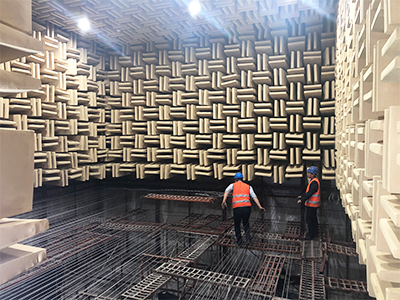The anechoic room is a special room used to reduce noise. It is usually used in scientific research laboratories, recording studios, factories and other places where noise needs to be controlled. The size of an anechoic chamber plays a vital role in its functionality.
First of all, the size of the anechoic chamber needs to be determined based on specific needs and uses. Generally speaking, the larger the area of the anechoic chamber, the better its sound absorption and sound insulation effects will be. Smaller anechoic chambers may not completely eliminate all noise, while larger anechoic chambers may provide better sound isolation.
Secondly, the size of the anechoic chamber is also related to its design purpose. If the anechoic chamber is mainly used for precise scientific experiments or recording work, then a large enough space is needed to ensure the accurate recording of sound or the accuracy of experimental results. And if the anechoic chamber is mainly used for noise control in general factories, the area can be adjusted according to the specific situation. For example, the volume of the anechoic chamber must generally be at least 200 times that of the product being tested. It must also provide enough space for personnel to enter and work, and it must also meet the requirements for the radius of the sound field. The above are the basic conditions that must be met during the construction of an anechoic chamber. If the available space does not meet the requirements, the anechoic chamber will not be completed. Therefore, even if the product to be tested is not large in size, the anechoic chamber must be at least 2-3 square meters to meet the testing needs. The normal size is generally around 5-20 square meters. If large-scale products are tested, such as vehicle testing of automobiles, If so, at least hundreds of square meters would be enough.
In addition, the size of the anechoic chamber also needs to consider the sound absorption performance of its internal structure and materials. Appropriate sound-absorbing materials and structural design can improve the effect of the anechoic chamber. Even a small anechoic chamber can achieve good sound insulation effect.
The size of the anechoic chamber needs to be determined by taking into account factors such as its use, design requirements, internal structure and materials. When designing an anechoic chamber, it is recommended to seek help from a professional engineer or designer to ensure that the area of the anechoic chamber can meet the needs and achieve the expected sound insulation effect.

